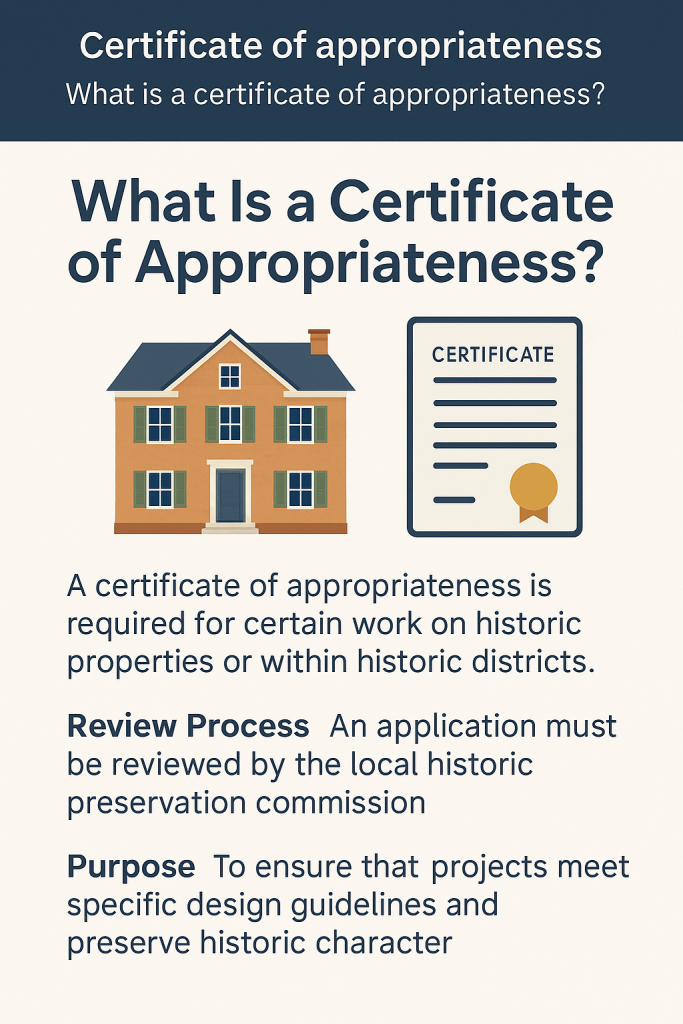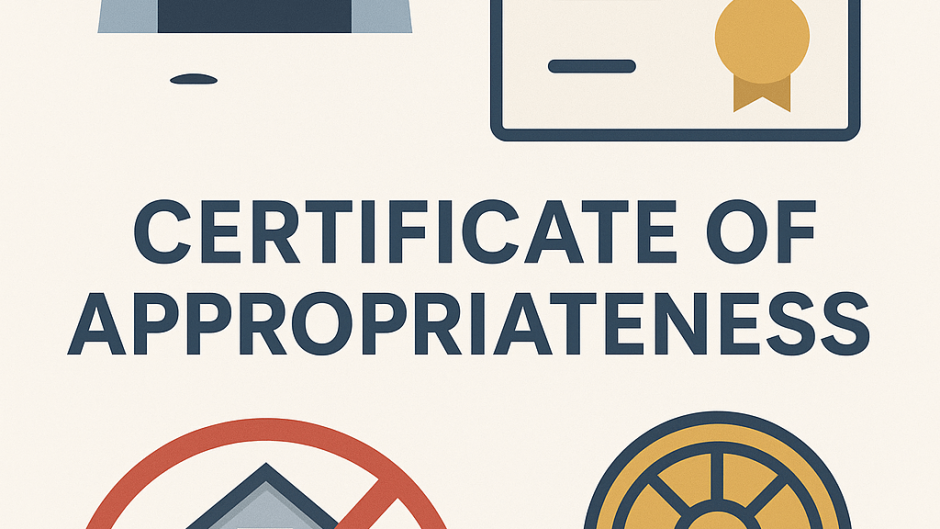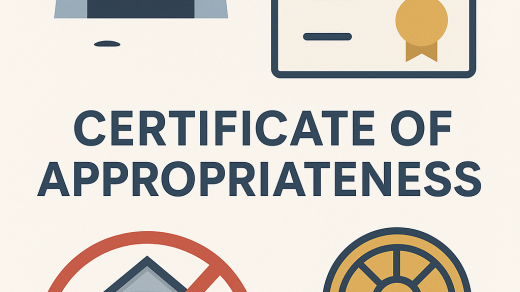Introduction
If you plan on doing any renovations or changes to a historic property, you may have come across a term that sounds more administrative than useful—certificate of appropriateness.
In this post, you will learn what a certificate of appropriateness is, its importance, who requires it, and the proper steps to get it.
We will define, explain the purpose, outline the application process, provide examples, and share helpful strategies so that you won’t face any delays or complications. You will have complete confidence regarding the preservation regulations after using this guide.
What Is a Certificate of Appropriateness?

A certificate of appropriateness COA is legally defined as a document issued by a local commission on historic preservation or an architectural review board granting permission for alterations to a property situated within a defined historic district or to an inscribed building of historical significance.
Put simply:
If you intend to change, destroy, move, or construct something on a historical property, this document is mandatory. It safeguards the historical character, materials, and aesthetics of the property or any nearby structures.
Why Is a Certificate of Appropriateness Important?
Obtaining a certificate of appropriateness is not just busy work; it serves genuine purposes.
✅ Keeps the community charm intact: It preserves the historic character and the architectural beauty of treasured neighborhoods.
✅ Helps retain or increase property values: Thoughtful renovations undertaken within the historic guidelines boost property value.
✅ Stops inappropriate changes: It prevents changes that could ruin the features of a historic site forever.
To sum up, the certificate is a gatekeeper that balances contemporary needs and development with the preservation of history.
When Do You Need a Certificate of Appropriateness?
You may need to apply for a COA if you intend to make any of the following changes:
- Significant changes to the roof, facade, or windows of a building’s exterior.
- Moving or destroying an old building.
- Building something new inside an old neighborhood.
- Changing the landscaping in a way that alters the view.
- Putting up signs or adding porches, decks, or fences.
💡 Tip: In some historic neighborhoods, even changing your home’s color may require permission.
Who Issues the Certificate of Appropriateness?
Usually, a local commission for historical preservation or design review board handles the submission of applications. Their members are mostly architects, historians, planners, or local leaders that understand the history and culture of the area very well.
They consider if the proposed changes:
- Preservation standards are met
- The architecture is respected
- The neighborhood looks are aligned with
The Certificate of Appropriateness Application Process (Step-by-Step)
How to Apply:
Step 1: Local Criteria Check
- Call your local planning or historic preservation office first. They will let you know if your property is in a historic district or if it’s registered somewhere.
Step 2: Application Preparation
- For the submission, you must include:
- Sketches or architectural designs
- Pictures of the existing building
- Details of the construction, the colors, the materials to be used, and how it will be built
- A project summary
Step 3: Review Meeting Participation
- Public sessions will discuss the proposals and you or your architect/representative will be required to defend your plan and respond to questions.
Step 4: Decision Receiving
- If everything goes well, you will receive the COA and can start work. If denied, you will have to either appeal or revise your proposals.
Consequences of Not Receiving a Certificate of Appropriateness
Not adequately adhering to this step might result in:
- Legal action or fines
- Cease works or removal of unauthorized work
- Resale or permitting stagnation
- In some cases, you may need to undo changes made, which will waste significant time and resources.
Case Study: A COA’s Impact on a Project
Before: The owner of a Colonial house from the 1920s wanted to replace the wooden historic windows with vinyl.
Without COA: The outcome is that the proposal was rejected because it would not have preserved the building’s historic character.
With COA: The proposal was approved after they modified it to use wood-clad replicas of the original design windows. The home also passed the energy efficiency tests, so it was able to maintain its charm and energy efficiency.
Advantage and disadvantage of the the Certificate of Appropriateness Process
Pros Cons
A historic site’s structure makes a positive difference to the community’s history. Can slow down construction timelines.
The visual impression of the neighborhood is improved. Requires navigating local governing bodies.
Supports long-term community preservation. May increase project costs (materials/design).
Smooth Strategies for gaining the COA Approval
✔️ Begin work after applying. Submitting the application early is beneficial.
✔️ Seek out a preservation architect.
✔️ Go to meetings and learn how to present projects in the best light.
✔️ Use mockups and sample materials and build a strong case.
✔️ Intend to communicate professionally and get straight to the point.
Concluding Thoughts: The Importance of a Certificate of Appropriateness
So, what exactly is a certificate of appropriateness? It’s not just a document; it relates to the preservation of the story, spirit, and physical form of your community. Homeowners, developers, and even architects need to know that this process, while sometimes frustrating, is crucial to thoughtful development and conservation.
With appropriate planning, it is possible to enrich a historic district with new construction while retaining and respecting the historic fabric and community identity.
FAQ’s
Q1. What differs a building permit from a certificate of appropriateness?
A building permit is issued for safety and code compliance, while a certificate of appropriateness is granted for the preservation of the site culturally and historically.
Q2. Can I appeal if my COA application is rejected?
Yes. Most commissions allow revisions or appeals to a higher authority.
Q3. Are internal alterations covered by a certificate of appropriateness?
No, not usually. Most COAs are concerned with modifications to the façade and outward-visible changes.
Q4. What’s the timeframe for COA approval?
It could range from 2 to 8 weeks based on your region and the work’s complexity.





